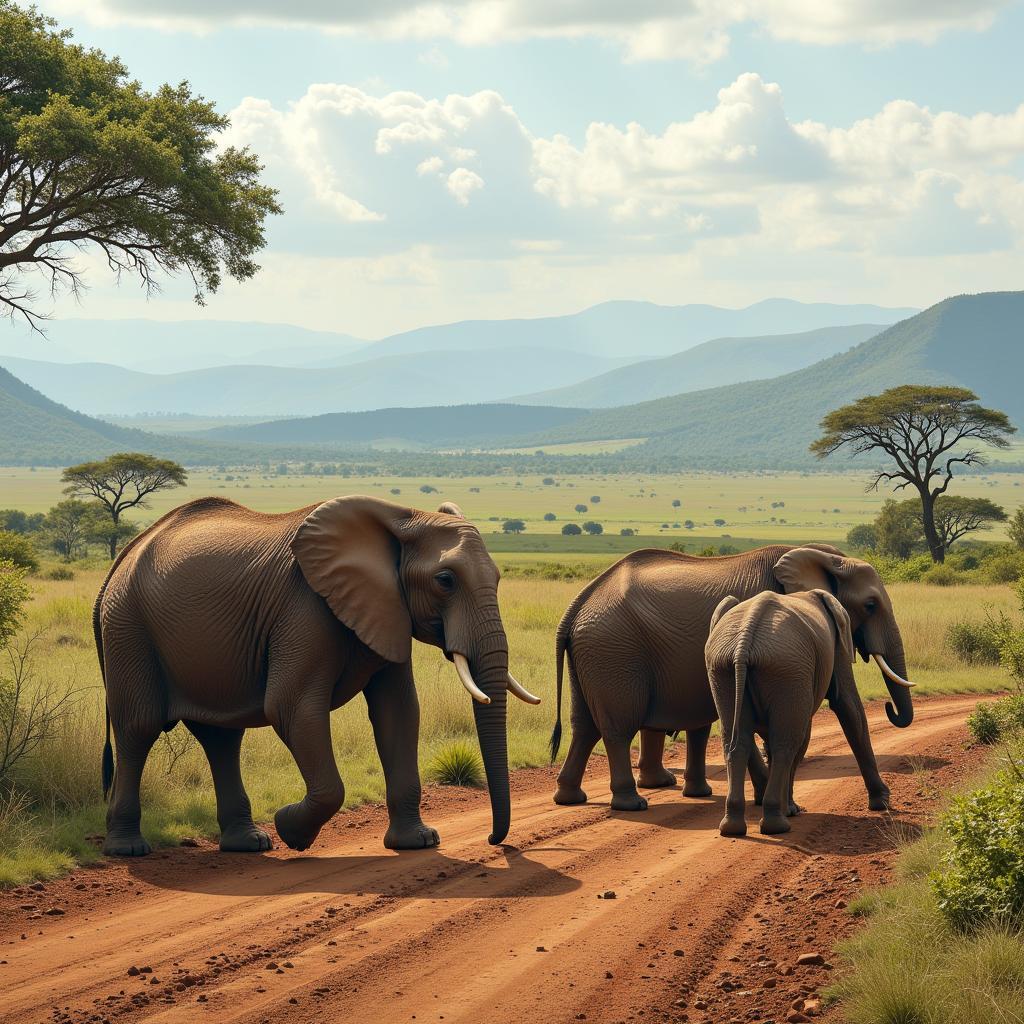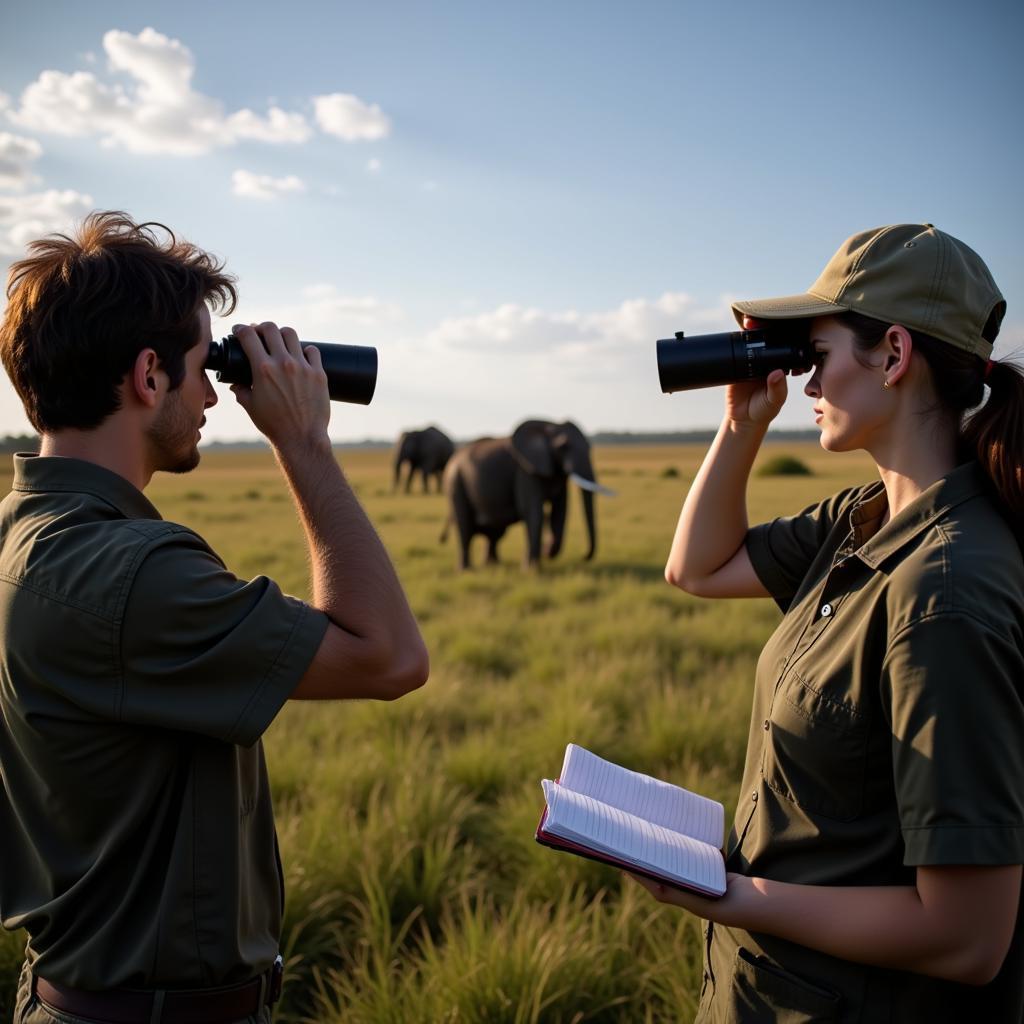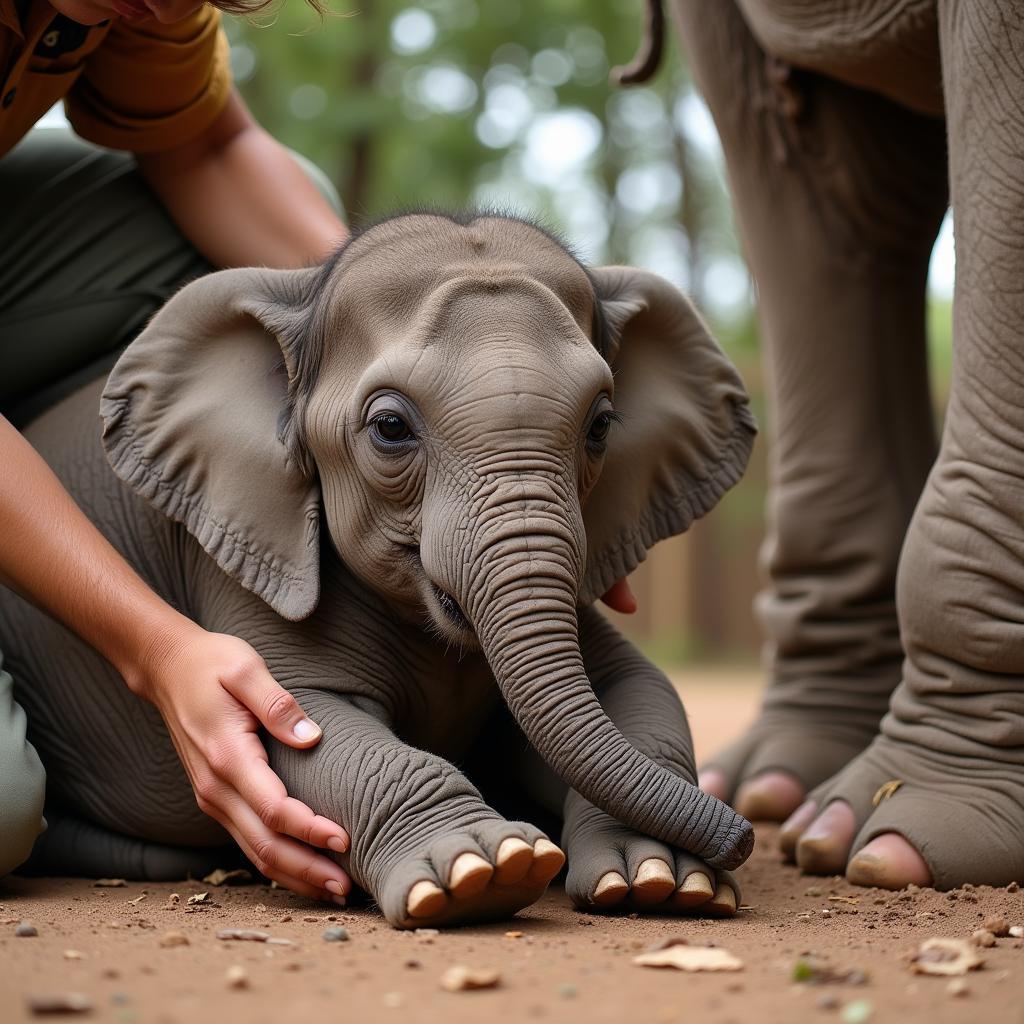African Elephant Breeding Programs: A Beacon of Hope for Giants
The African elephant, a majestic symbol of the continent, faces an unprecedented crisis due to habitat loss, human-wildlife conflict, and poaching. To combat this decline and ensure the survival of these magnificent creatures, African Elephant Breeding Programs have emerged as crucial initiatives. These programs aim to increase elephant populations, preserve genetic diversity, and educate the public about the importance of conservation.
Understanding the Urgent Need for Intervention
African elephants are classified as “Endangered” by the International Union for Conservation of Nature (IUCN), with their numbers dwindling at alarming rates. Habitat fragmentation due to human encroachment restricts elephant movement, disrupts breeding patterns, and limits access to resources. Furthermore, the illegal ivory trade continues to pose a significant threat, decimating elephant populations across Africa.
 African elephant family in shrinking habitat
African elephant family in shrinking habitat
The Multifaceted Approach of Breeding Programs
African elephant breeding programs employ a multifaceted approach that addresses both the biological and social aspects of conservation. Key strategies include:
1. Creating Safe Havens: Protected Areas and Reserves
Breeding programs prioritize the establishment and maintenance of secure environments where elephants can thrive without threats. Protected areas and reserves offer ample space, natural resources, and protection from poaching, allowing elephants to roam freely and engage in natural breeding behaviors.
2. Scientific Monitoring and Research
Understanding elephant behavior, reproduction, and genetics is crucial for successful breeding programs. Scientists meticulously monitor elephant populations, track movements, and collect genetic data to inform conservation strategies and ensure healthy breeding practices.
 Researchers monitoring African elephant behavior
Researchers monitoring African elephant behavior
3. Collaborative Conservation Efforts
Breeding programs thrive on collaboration. International organizations, governments, local communities, and conservationists work together to share knowledge, resources, and expertise, fostering a united front in the fight to save African elephants.
4. Public Education and Awareness
Educating the public, particularly younger generations, is paramount to fostering a sense of responsibility and inspiring action. Breeding programs often incorporate educational initiatives to raise awareness about elephant conservation, the threats they face, and the importance of sustainable practices.
Success Stories and Hope for the Future
Across Africa, elephant breeding programs have witnessed encouraging successes, demonstrating the power of dedicated conservation efforts:
- Botswana: Home to the largest elephant population in Africa, Botswana’s community-based conservation initiatives have played a vital role in protecting elephants and mitigating human-wildlife conflict.
- Kenya: The David Sheldrick Wildlife Trust, renowned for its elephant orphanage and rehabilitation center, has successfully reintroduced orphaned elephants back into the wild, contributing to population growth.
 An orphaned African elephant calf at a rehabilitation center
An orphaned African elephant calf at a rehabilitation center
These success stories offer hope and demonstrate that strategic interventions can make a tangible difference in safeguarding African elephants for generations to come.
Conclusion
African elephant breeding programs stand as beacons of hope for these gentle giants. By addressing the multifaceted challenges facing elephant populations, these initiatives offer a lifeline for their survival. Through continued research, collaborative conservation, and public education, we can work together to ensure that the magnificent African elephant continues to roam the savannas for generations to come. To learn more about traditional African art and crafts, explore these beautiful pieces: African handicrafts for sale.
FAQs
1. How effective are elephant breeding programs in increasing populations?
Elephant breeding programs have shown promising results in stabilizing and increasing elephant populations in specific regions. Their effectiveness relies on various factors, including habitat availability, poaching pressure, and genetic management.
2. What are the biggest challenges faced by breeding programs?
Major challenges include habitat loss, human-wildlife conflict, limited resources, and the persistent threat of poaching.
3. How can I contribute to elephant conservation efforts?
You can support reputable conservation organizations, spread awareness, advocate for responsible tourism practices, and make conscious choices to reduce your environmental footprint.
4. Do breeding programs address the issue of genetic diversity?
Yes, breeding programs prioritize maintaining genetic diversity by managing breeding pairs and ensuring representation from different elephant populations.
5. Are there opportunities for volunteering or internships with elephant breeding programs?
Many organizations offer volunteer and internship opportunities, providing hands-on experience in elephant conservation.

